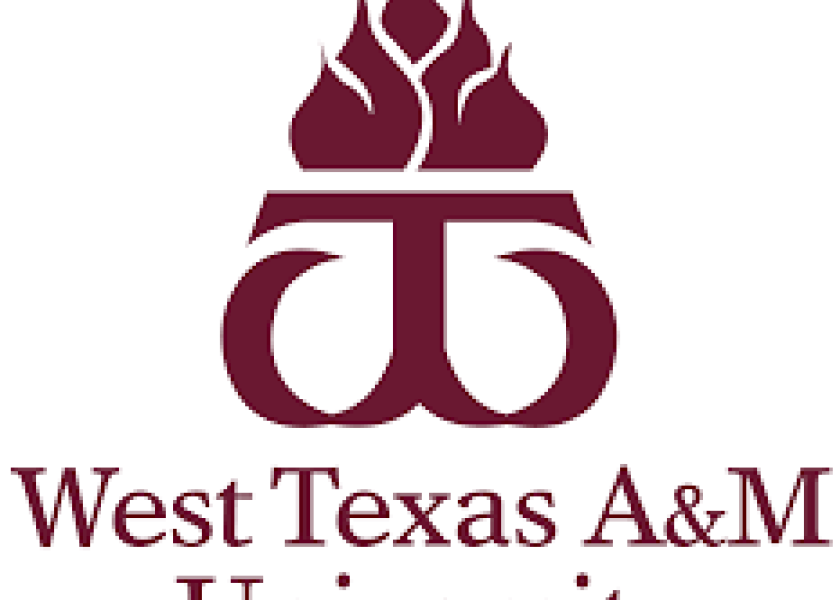West Texas-A&M Breaks Ground on Two Veterinary Facilities

The Texas A&M University System’s effort to build the strongest livestock program in the nation moved three-steps forward today as officials broke ground on two new facilities and announced the hiring of one of the top large animal veterinarians in the world at West Texas A&M University.
“Today’s ground breakings are the culmination of our $90 million investment in the future of large animal health in the Panhandle,” John Sharp, chancellor of The Texas A&M University System, said. “This investment — and the buildings we are breaking ground on here today — ensure The Texas A&M University System continues to not only meet but exceed the needs of this region and the state in the future.”
Sharp joined local elected officials, including state Rep. John Smithee, to break ground on the new Veterinary Education, Research & Outreach (VERO) facility, as well as the Texas A&M Veterinary Medical Diagnostic Laboratory (TVMDL).
The VERO facility will serve as a learning space to supplement externship programs in rural Texas. The more than 22,000 square foot facility, budgeted at $22 million, will be a regional veterinary teaching center that will facilitate collaborative, multidisciplinary research among scientists from across the region.
Dr. Paul Morley will serve as the director of research at the VERO facility, Sharp announced. “Dr. Morley is one of the best-respected large animal veterinarians in the world,” Sharp said. “His presence brings instant prestige to the VERO facility’s efforts.”
A Nevada native, Morley is accustomed to raising cattle and earned a bachelor’s degree in animal science and a Doctor of Veterinary Medicine (DVM) degree from Washington State University. He specializes in epidemiology and has been a professor at Colorado State University for the past 20 years.
“I'm really looking forward to showing all levels of students how exciting research can be and how important it is for the future of agriculture and the future of veterinary medicine,” Morley said. “The Panhandle is one of the true jewels in the world, in regard to opportunities for intensive animal production and all of the work and careers that go along with that.”
Adjacent to the VERO facility, the TVMDL facility, budgeted at $17.6 million, will feature all the latest technology to provide the best in diagnostic capabilities. The 11,233 square foot building will house labs for bacteriology, pathology, serology and virology as well as spaces for receiving and processing and necropsy and support.
“These new state-of-the-art facilities create a highway of research activity from WTAMU to TAMU that supports animal health in this region,” Dr. Walter Wendler, president of WTAMU, said. “This partnership brings together the System’s universities to extend their reach and address Texas’ large animal veterinary needs.”
The TVMDL building will be named the Charles W. Graham, DVM Texas A&M Veterinary Medical Diagnostic Laboratory after Dr. Graham, a Texas A&M Distinguished Alumnus and one of Texas’ most renowned equine veterinarians.
Graham’s veterinary practice led to the establishment of Southwest Stallion Station, a horse-breeding business responsible for the nation’s most famous quarter horses. He is the only person to serve as president of both the Texas Quarter Horse Association and the Texas Thoroughbred Breeders Association. In addition to the equine industry, he is recognized as a successful cattleman and founder of Graham Land and Cattle Company, specializing in Braham-influenced cattle.
Sharp said that the two new facilities under construction are an important part of The Texas A&M University System’s “Serving Every Texan Every Day” initiative to partner with four system schools — WTAMU, Texas A&M University-Kingsville, Tarleton State University and Prairie View A&M University — to expand the veterinary medical education, research, undergraduate education and outreach throughout the state.
Texas A&M University’s College of Veterinary Medicine & Biomedical Services (CVM) established the Texas A&M Veterinary Medical Complex at WTAMU to address the shortage of large animal veterinarians in Texas.
“The VERO facility will be the most cost-effective and innovative game-changer in support of rural veterinary medicine in the Texas Panhandle,” said Dr. Eleanor M Green, the Carl B. King Dean of Veterinary Medicine. “With Dr. Morley on board at VERO, the exchange of knowledge on the information superhighway between WTAMU and the CVM for the benefit of Texas and the livestock industry will accelerate.”
About The Texas A&M University System
The Texas A&M University System is one of the largest systems of higher education in the nation, with a budget of $4.55 billion. Through a statewide network of 11 universities and seven state agencies, the Texas A&M System educates more than 148,000 students and makes more than 22 million additional educational contacts through service and outreach programs each year. System-wide, research and development expenditures exceeded $972 million in FY 2016 and helped drive the state’s economy.
About West Texas A&M University
West Texas A&M University, a member of The Texas A&M University System, is located at the heart of the Texas Panhandle and serves the top 26 counties of the state. With a budget of more than $138 million, the University serves more than 10,000 students with 59 undergraduate programs, 38 graduate programs and two doctoral programs. Most programs have the option to be completely online and rank competitively in national publications such as U.S. News and World Report.







